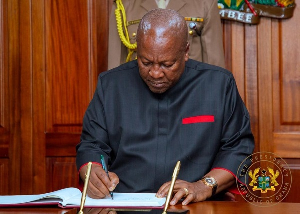Employment Minister, Haruna Iddrissu has revealed that government may need to expend over 360million annually in order to recruit and sustain over 100,000 young people into the Youth Employment Module.
Addressing members at the Public Accounts Committee in Accra, Haruna sought to explain the unemployment issue in the country and the YEA’s plans for the long term.
He said: “So I will share in your thinking that growing unemployment is a problem particularly for young females which we need to address. In terms of numbers the YEA, subject to Parliament’s appropriation is looking at a 100,000- if for example we were to pay each person an allowance of GHC200 or GHC300, we will need about GHC360million annually in order to recruit a 100,000. If we were to provide GHC760million or thereabout we should be able to recruit 200,000 persons for youth employment”.
In terms of the projection of unemployment in the country, Mr Iddrisu stated that – “it is quite worrying for young people especially if you look at the category from JHS to SHS, who are not able to climb the educational ladder, we need to cater by way of skills mismatch and skills gap for that category.
There is also the category of the university and polytechnic graduates that because the economy is not expanding enough and because of rationalized public policy decisions on compensations we are not able to absorb many of them also create another epoch of unemployment.
"We also generalize have the situation where many out of school are not able to get employed because of the wrong and erroneous notion that the public sector remains the most viable employer in this country. We need to disabuse the minds of our people. Get the private and the public sector to work together very closely. In my view the private sector should be the incubator of jobs and government should provide an enabling environment for them”.
He also disclosed that government is committed to a specific policy framework to support the employment of young persons, which he says “remain a national and political imperative”.
“We should conceive it as a national security threat if we are unable to absorbed many of our youth and also appreciate the dichotomy between skilled youth and unskilled. There is a category which still needs their skills to be enhanced and I should trust that subsequent to the ministerial report we have captured many of these issues”
According to Haruna, Youth Employment initiative started somewhere is 2006 and 2008 without any proper legislation, allocation, lack of accounting system which he thinks accounted for the leakages in the past.
“As laudable as the decision was in 2007, it was not backed by legislation so many of the decisions were left at the behest of ministers working together with appointed coordinators. There was no defined structure. I can assure you today that I don’t take any decision in respect of Youth Employment Agency”.
The Tamale South MP also confirmed that government has begun a policy that will ensure 65 percent of service charges will be paid to Youth Employment Module’s beneficiary allowance.
He explained that the levies are accrued from the Communication Service tax, District Assembly Common Fund and the GETFUND.
“Like in the past, you could have a situation where a service provider got GHC500 from government in respect of a beneficiary but ended up, on the basis of its cost, bank borrowing to return less than GHC100 to the beneficiary.
"Now 65 percent of the dedicated amount of Youth Employment Agency funds accruing from Communication Service tax, District Assembly Common Fund and the GETFUND will be dedicated to payment of beneficiary allowances on a dedicated payroll policy system,” he said.
By the new policy and arrangement, Mr. Iddrisu further stated that each beneficiary is expected to earn GHC250 as allowance, with GHC50 going into the provident fund when the beneficiary is exiting.
Business News of Thursday, 19 May 2016
Source: B&FT













